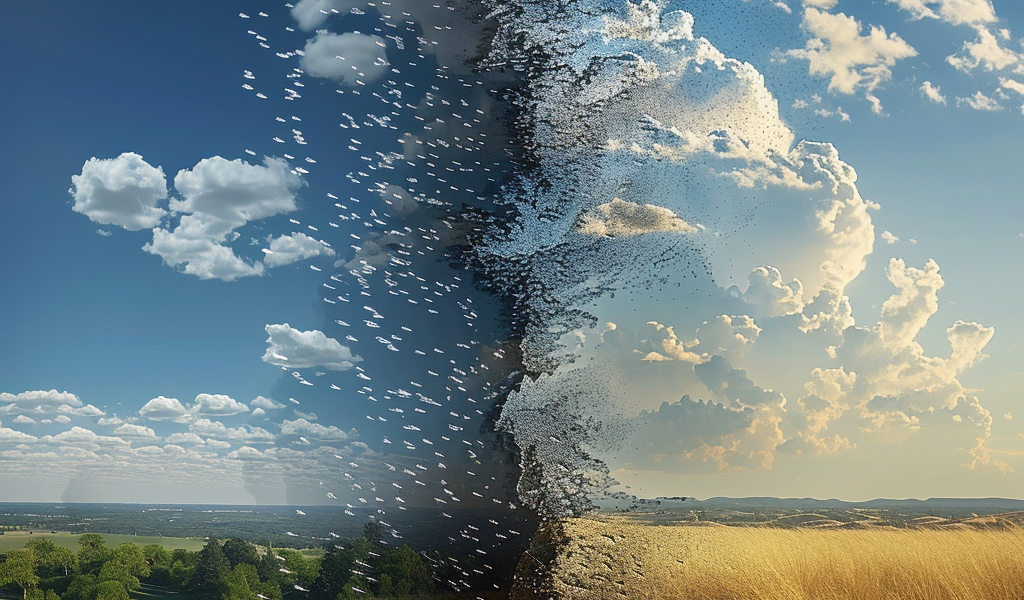In a recent study, researchers have delved into the impact of human-induced greenhouse gas and aerosol emissions on rainfall patterns in the United States. The findings reveal that while greenhouse gas emissions contribute to increased rainfall, aerosols have a long-term drying effect, with short-term impacts that vary with the seasons.
The research, led by the Department of Energy’s Lawrence Berkeley National Laboratory, sheds light on the complex interplay between emissions and precipitation. It is widely known that greenhouse gas emissions, such as carbon dioxide, should lead to increased rainfall. These emissions warm the atmosphere, facilitating water evaporation from oceans and enabling the air to hold more moisture, ultimately resulting in more rainfall. However, historical data did not clearly reflect this anticipated rise in precipitation.
The study uncovers that the projected increase in rainfall has been largely counteracted by the drying effect of aerosols – emissions like sulfur dioxide, commonly associated with air pollution and smog, produced by burning fossil fuels. The research, published in the journal Nature Communications, emphasizes the significant role of aerosols in offsetting the expected rise in extreme rainfall.
Mark Risser, a research scientist at Berkeley Lab and one of the lead authors, notes that until the 1970s, the anticipated surge in extreme rainfall was mitigated by aerosols. However, the implementation of the Clean Air Act led to a drastic reduction in air pollution in the United States, effectively turning off the aerosol masking. This sudden change implies that rainfall may escalate much more rapidly than previously predicted.
Conventional climate models have encountered challenges in accurately forecasting the human impact on rainfall at regional levels, a critical aspect for climate change adaptations and mitigations. By employing a novel method and leveraging rain gauge measurements from 1900 to 2020, researchers have gained a more comprehensive understanding of how human activities have influenced rainfall in the United States.
Bill Collins, associate laboratory director for the Earth and Environmental Sciences Area at Berkeley Lab and co-lead author of the study, highlights the significance of the research in providing conclusive evidence for higher rainfall. The study also resolves the conflicting conclusions drawn by previous assessments, as it isolates the impact of greenhouse gas and aerosol emissions on both average and extreme rainfall.
This groundbreaking study offers valuable insights into the intricate relationship between human-induced emissions and rainfall patterns, contributing to a deeper understanding of climate change dynamics at a regional level.





